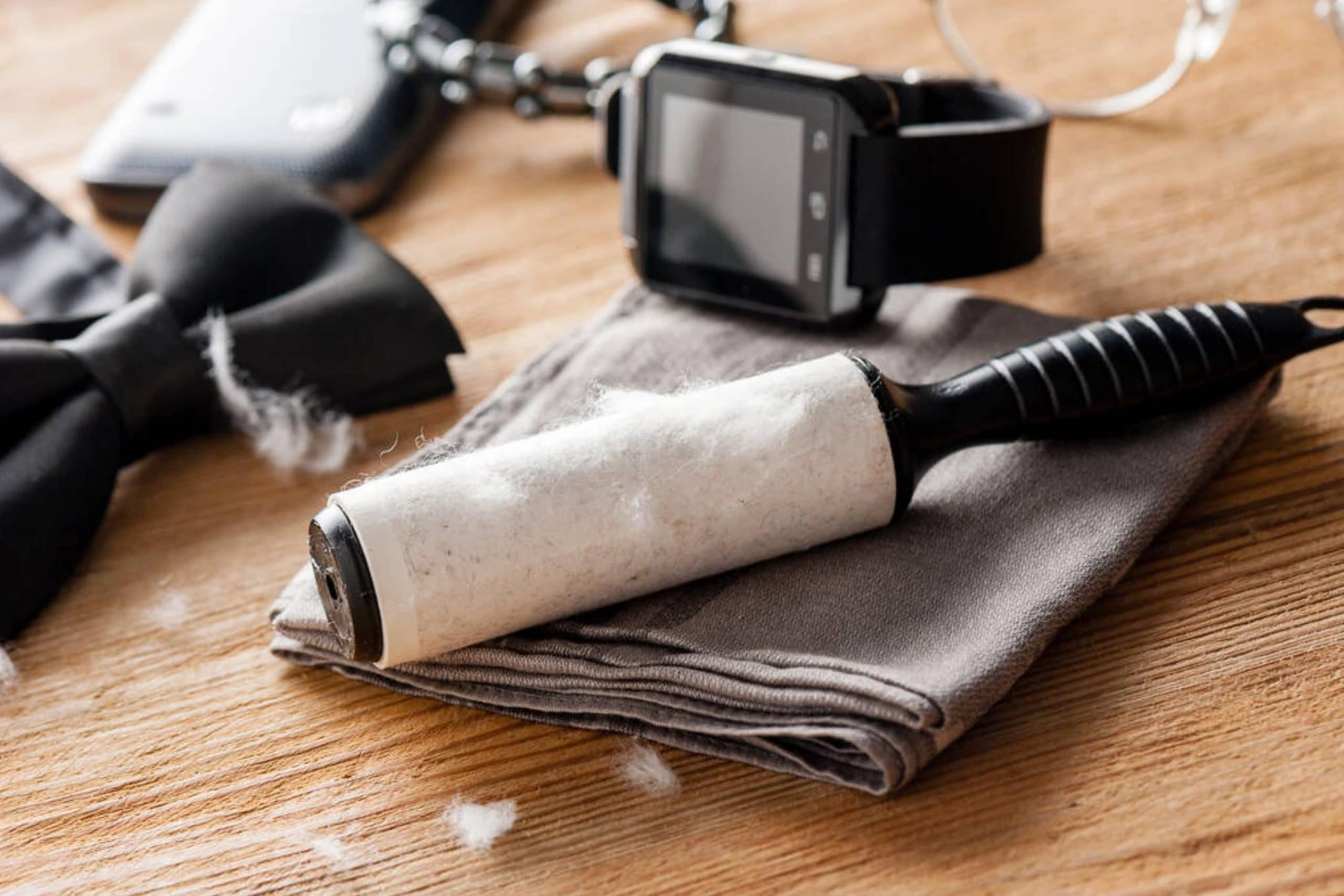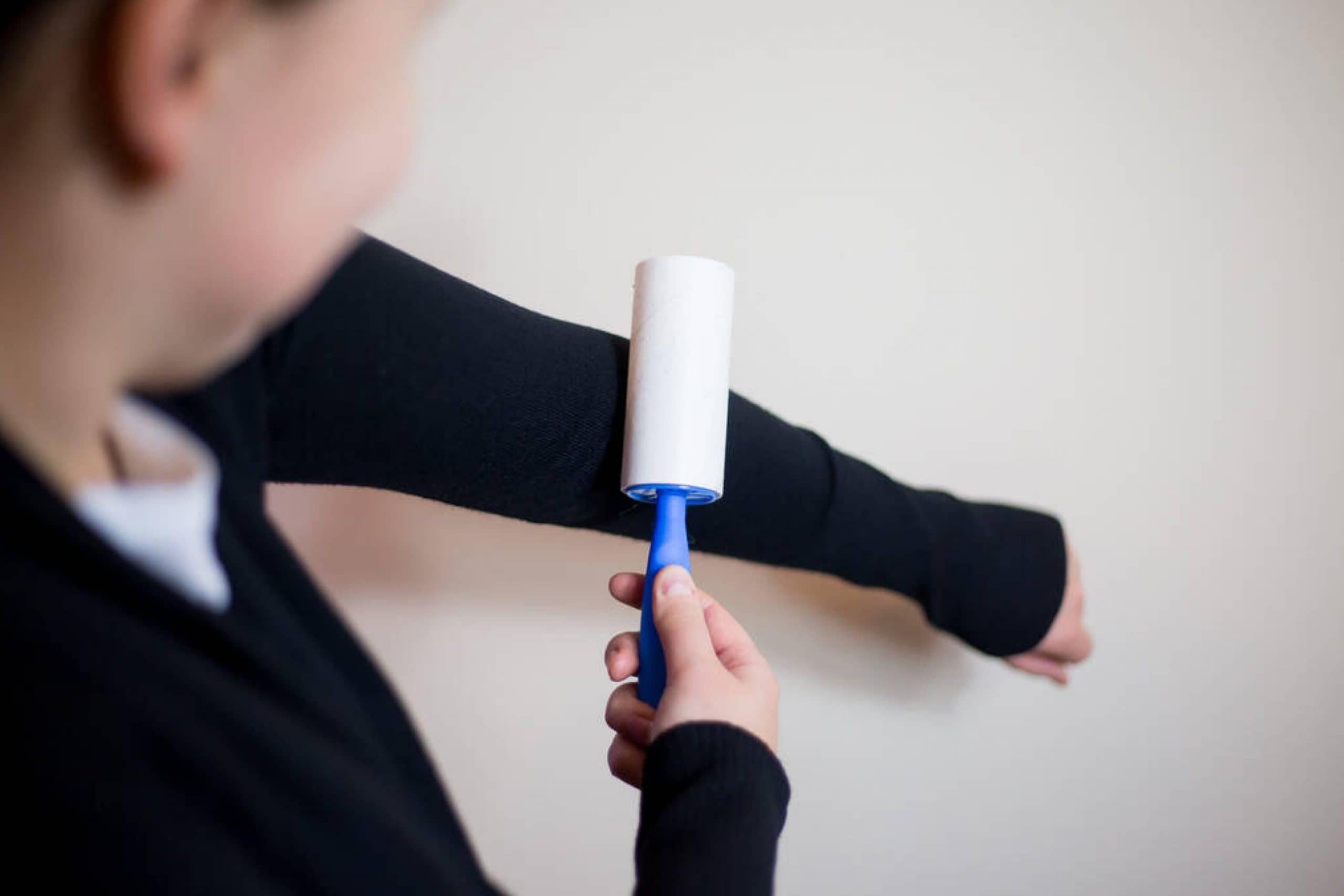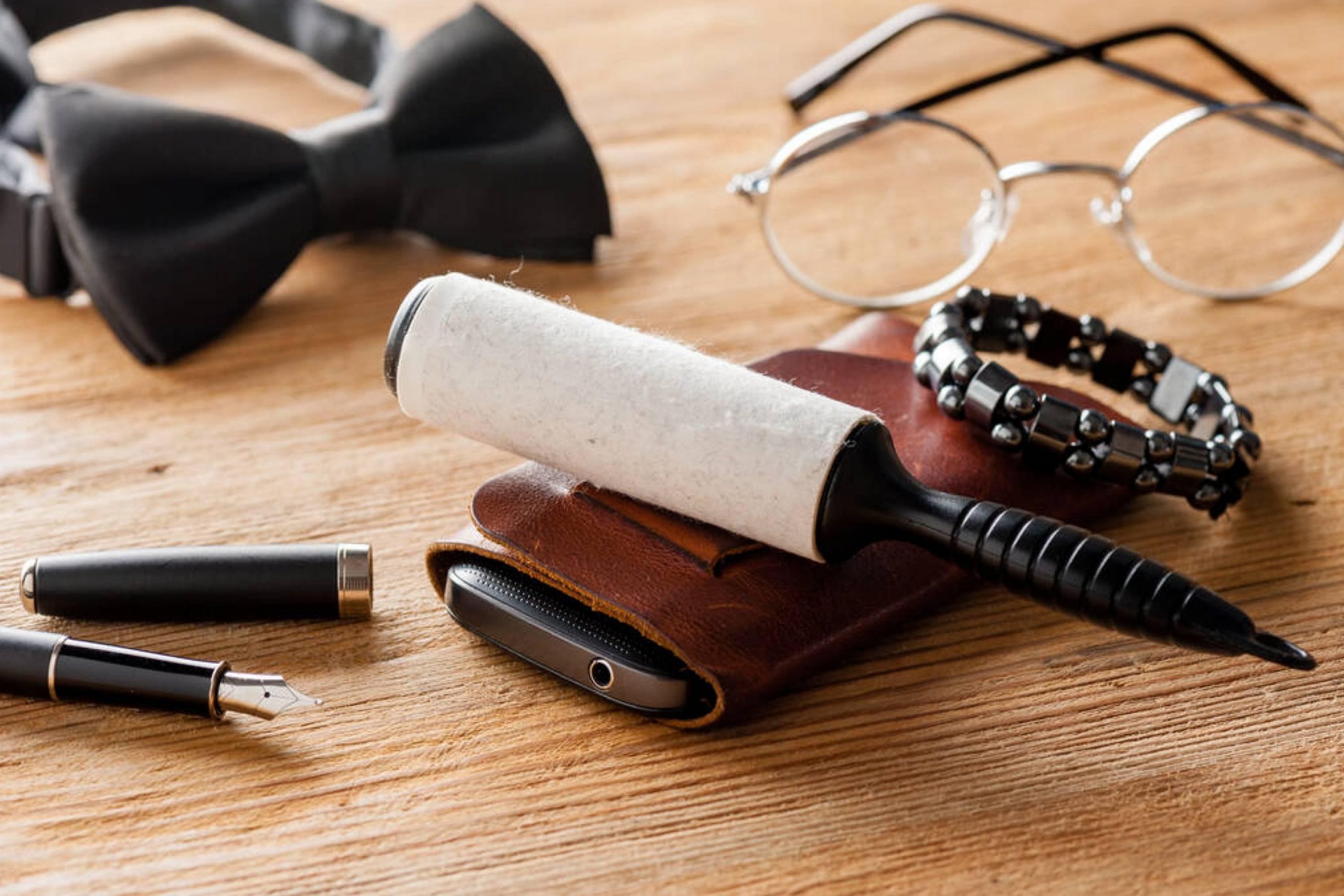Lint is a stubborn thing! Once it gets to your clothes, it can be rather hard to remove. Most of us use lint rollers for this purpose, and we have to say that these items do their job pretty well! However, what shall you do in case the lint got stuck deep in the fabric’s fibers?
In this case, a lint roller will not be much help, unlike a lint brush. But when you use lint brushes on regular basis, you will sooner or later have to clean them. Otherwise, brushes that are covered with lint will not be able to remove it from your garments anymore.
In this article, you will find the information that will help you to learn how to clean a reusable lint brush. Also, we will explain how lint brushes work and what their design is. Like that, you will be able to better understand how you should hold your lint brush in order to remove the lint from your clothes more effectively. Finally, you are going to learn a few most common lint brush considerations?
With those in your mind, it will be easier for you to figure out which lint brush it is best to purchase and what you should pay attention to when deciding what type of lint brush you need.
How Do You Clean a Lint Brush?
Line brush is a great tool for getting rid of lint on your clothes. And one of the best features of it is that you can use your lint brush again and again unlike lint rollers that have to be purchased each time the old roller is finished.
However, in comparison to a lint roller, a lint brush has one nuance. Everyone who has a lint brush often wonders how to get the lint out of a brush correctly and quickly. So below you can check out a few most widespread methods.
They are both easy and effective, and in addition, none of them will require any specific tools or skills from you!
- The first thing you can try when cleaning a lint brush is to simply rub your fingers or palm along the top of it. Just make sure that you are going with the grain. This will pick up much of the lint accumulated on the surface but there may be some stubborn lint left over.
- If your hands are very dry for some reason, you may find it hard to move the lint as described above. In this case, you might try moistening your palms first. But this may have another drawback since moist hands might cause additional dirt to stick to your hands.
- A cloth dampened with water can work great as well. Use as little water as possible, wring out the cloth so it is not dripping, and lightly rub it against the grain of the brush.
- A vacuum cleaner with a nozzle or detail attachment can be a very good choice. It is super handy for cleaning very dirty lint brushes that have dirt particles as well as lint in the base of the brush.

The only downside that using a damp cloth method has is that the water or other moisture may collect in the padded base of a lint brush. As a result, this moisture can sooner or later start damaging your brush over time. So we would recommend you use this method as seldom as possible, and only if other options don’t work for you.
As for the vacuuming option, it is basically very effective and quick to use.
You only need to keep in mind one rule of thumb: avoid pressing the nozzle of the vacuum cleaner too hard into the teeth of your lint brush! If you do this, it may damage them and the tool will become less effective.
However, these are not all the solutions that can be used for removing lint from your lint brush. Below, we want to introduce a few more methods for you. One of them is suitable for the extremely stubborn lint that won’t just leave easily.
Use Tape to Clean a Lint Brush
We all know that tape, whether it is masking tape or duct tape, is excellent at picking up lint, even when we don’t want it to. So if you need to get rid of lint that is stuck to your clothes, such a tape will be a great tool to have around. And moreover, we can leverage that to help clean our lint brush!
When cleaning a lint brush with its short teeth, you will want to clean the lint off with quick motions in succession. To do that, you need to set it up with a strong base that is easy to use.
Feel free to use your fingers for this procedure, but you could use any other solid object. For example, a sanding block or even a regular ruler that is used in schools.
The sequence of actions is going to be the following:
- Start with trying the above methods first in order to remove the majority of the surface lint.
- Hold two to three fingers together.
- Wrap your tape around the fingers, angled down to cover more area, with the sticky side facing out.
- Be sure the tape is not too tight since, like this, it may cut off your blood circulation!
- Start on one end of the lint brush. Press the tape into the teeth and bristles straight down.
- Pull up from the brush in a quick motion following the grain of the teeth.
- Repeat in quick movements.
If you notice that the tape stops picking up lint, rotate it so that a lint-free sticky area is showing. Also, consider that the tape may need to be replaced after a while if it gathers too much lint! So always have a roll of tape and scissors ready at hand.
What to Use If You Need to Clean an Exceptionally Stubborn Lint Brush?
First of all, we need to admit that it is very rare. But still, sometimes long, thin threads might get caught up in a lint brush and are very difficult to remove. Should this happen to you and your lint brush, we might need to take some extra ideas regarding the cleaning procedure.
First of all, we want to warn you: be very careful with any sharp objects when removing such stubborn lint! In particular, avoid using something as sharp and stiff as a sewing needle, for example. This can easily damage your lint brush.

See, the lint brush base that holds the bristles can be very delicate, and sharp tools or objects might damage it. Also, each of these tools works best by going with the grain to avoid damaging the lint brush teeth.
Instead, we recommend you use a stiff toothbrush as a safer option. It can get in between the bristles easily and thus latch onto difficult lint. Toothpicks used with a gentle touch will be able to get underneath string and thread as well.
Some people use tweezers, and they allow for targeted lint cleaning. But often, tweezers will only pick up one thread or one hair at a time which is not quite useful and takes way more time.
How to Use a Lint Brush Correctly?
You might be surprised with this title since it seems so easy and obvious! You just grab your lint brush and work it over the garment. Thus, the lint is removed.
Isn’t it like this, you may ask? Well, in general, yes, it is. But there are still certain nuances that we would like to highlight for you.
First of all, we suggest you learn how lint brushes are constructed. Lint brushes are designed in a specific way which allows them to catch lint from clothing when you rub it along the surface.
The handle and body of a lint brush look very similar to a normal hairbrush. However, the teeth or bristles of a lint brush are very different. They are designed very similarly to the hook side of hook and loop, or Velcro, fasteners.
If you take a closer look at the teeth of a lint brush, you will notice that they point toward one side of the brush and are sometimes even curved very slightly! This allows the teeth to grab at loose fibers like lint and capture them in the base when they are rubbed along the fabric. Underneath the teeth, there is a soft padded base. It is needed because it helps the lint brush keep even pressure when pressed into the fabric.
Due to the specifics of a lint brush bristles, you need to make sure you pay attention to the direction that the teeth are facing. Like this, you will be able to use and clean the brush correctly.
There is such a term as a “grain” when we speak about lint brushes.
Grain is the direction that the teeth or bristles of your brush lean toward. To get the idea of it, simply take your lint brush and move your hand along the brush bristles. Does it feel soft? If yes, then you are going with the grain. If it feels rough, it means that you are going against the grain.
This is why, when using a lint brush to pick up lint, you want to move it along your clothing (meaning, against the grain of the brush). It will allow the lint particles to be easily grabbed by the teeth of the brush.
To clean a lint brush, simply go in the opposite direction. If you already feel puzzled about those directions, don’t worry!
Quite many brush manufacturers are kind enough to place special markings on the handle or base of their brushes. Those markings show which way the lint brush should be used. So anyway, you will not be left alone without help!
Some Lint Brush Considerations to Keep In Mind
It may seem very easy to select a lint brush, but in fact, this tool has quite many nuances and variations! This is why we recommend you check out a few handy considerations. If you keep them in mind, you will be able to easily understand which type of lint brush you need and which brush suits you more.
Pay Attention to the Design
Look at different lint brush designs before you make a decision. Some lint brushes have two sides, whilst others may have a special button that will rotate the head around! Both brushes are intended to make it easier to brush your sleeves when wearing a suit jacket or to help out when you need to switch hands.
You just need to decide which design will be more suitable for your particular case.
Mind What Item You Are Going to Use It On
Not everyone knows that lint brushes can be almost impossible to use on sweaters! Using them on coats with thick piling might also be not the best idea. If you do so, the teeth of your brush will simply get caught in the thick fibers, which will make it more difficult to brush the lint out. So if this is your case, a sticky lint roller may be a better option.

Don’t Confuse It With a Suit Brush!
Quite many people still think that a lint brush and a suit brush are the same things, but this is not like that. While it may be advertised to do the same thing, a clothing brush (also known as a suit brush) will not work as well as a lint brush in removing hair or thread from clothing.
Instead, suit brushes are exceptionally good at brushing out dirt, dandruff, and other particles from suit fibers. But if you use them on lint, they will just move it around instead of getting rid of it.
Consider What Type Of Fabric You Need to Clean
Not any lint brush can be used on any type of fabric.
For example, natural lint brushes that are often made of rubber or other soft materials can be very effective on clothing with very smooth surfaces.
However, with any type of loose materials like cotton, such brushes will be very difficult to use properly. See, in order to use this type of lint brush on such fabrics, it is impossible to go through without rubbing the cloth with a lot of force.
So, now you know way more about lint brushes and the nuances of their use. We told you how to clean a lint brush correctly, and also, you found out what makes this type of brush different from, let’s say, suit brushes. In addition, you are now aware of several handy tips and life hacks that will allow you to choose a lint brush that is more suitable for you.
[wp-faq-schema title=”Frequently Asked Questions”]
Hi! I want to buy a lint brush, but I don’t know which one to choose. See, I’m choosing between a red lint brush and another one that looks like a pocket or a travel version. Does anyone kow whether they are any different?
Hello! As far as I know, they should not be different. Lint brushes all have the same design mostly. But if you are not sure, the best thing you can do is to ask a shop assistant. They have to know that for sure!
Hello! As far as I know, they should not be different. Lint brushes all have the same design mostly. But if you are not sure, the best thing you can do is to ask a shop assistant. They have to know that for sure!
I have a question, folks. Is it allowed to rinse or wash lint brushes with water? Did anyone try it? How did it work?
Hey there. I don’t think it’s a good idea, to be honest. See, lint brushes are rather delicate, and if you wash yours with water, the wooden handle and the base of the brush might get damaged. That’s not what you want to have for sure.
Can anyone tell me how to clean a velvet lint brush? I bought it for the first time and now it’s full of lint that I can’t remove since I don’t know how!
Hello! Don’t worry, it’s pretty easy to do. You need to remove excess hair from the brush (if it’s there) with a metal comb. Don’t use plastic combs since they can break! Then, run the bristles of your lint brush under warm running water, add a few drops of gentle shampoo and work it in with a clean toothbrush. If you don’t have a toothbrush, simply use your fingers. Rinse the lint brush with clean water and let it dry. That’s it! Good luck!
Hi! I’m gonna ask you what sounds a stupid question but still: how to use lint brush? Don’t laugh, I’ve never used it before, only lint rollers! P.S. It’s a brush, not a portable lint-removing razor.
Well, it’s pretty easy. You need to rub the brush across the fabric one way. The fabric cushion that’s mounted to the brush will collect the small particles of lint.
Could you please recommend me the best lint brush? A friend of mine was praising this tool so much that now I want to try it, but I’d like to pick the right one, you know.
Hi folks! I have a question: did anyone use a sunbeam lint brush? Is it good?
I used it for quite a long time before I shifted for electric lint removers (now they’re my eternal love!). It’s quite good for the manually operated brush! If this is your first lint brush, I can recommend it to you for sure.